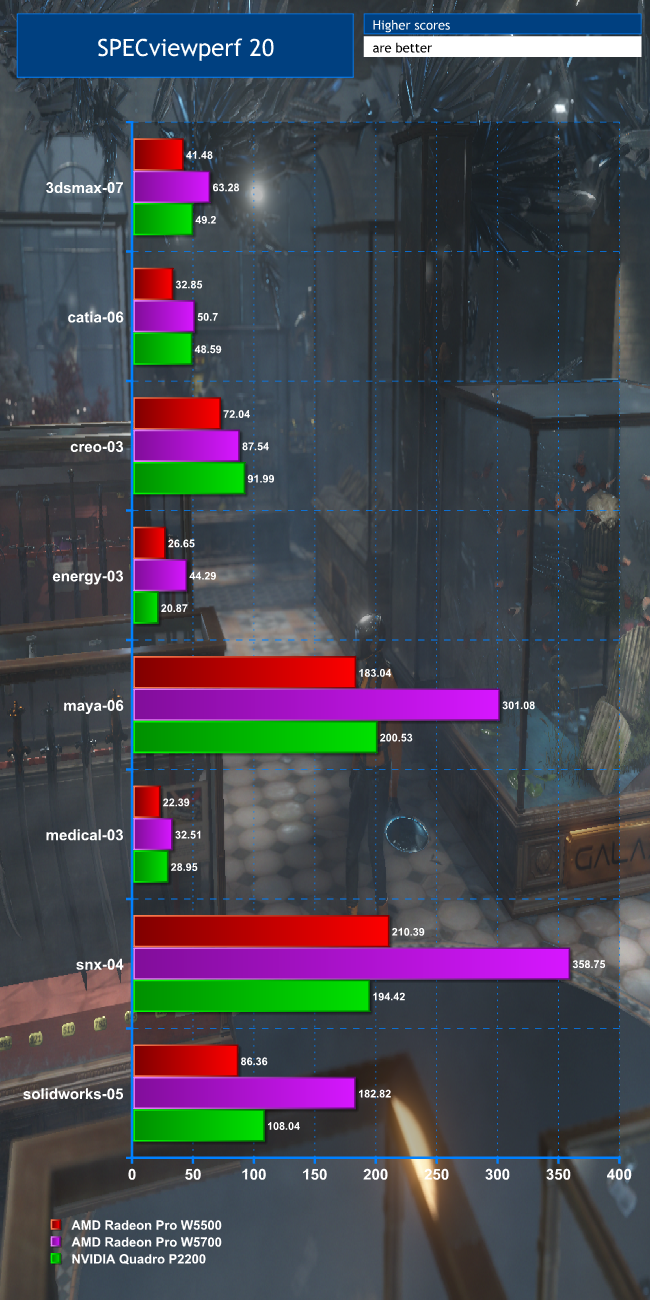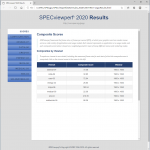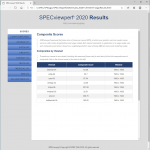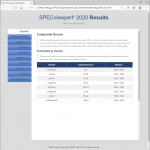SPECviewperf 20
The SPECviewperf® 2020 benchmark, released on October 14, 2020, is the worldwide standard for measuring graphics performance based on professional applications. The benchmark measures the 3D graphics performance of systems running under the OpenGL and Direct X application programming interfaces. The benchmark’s workloads, called viewsets, represent graphics content and behavior from actual applications, without the need to install the applications themselves.
Major updates in SPECviewperf 2020 include:
- New viewsets taken from traces of the latest versions of 3ds Max, Catia, Maya, and Solidworks applications.
- Updated models in the viewsets based on 3ds Max, Catia, Creo, Solidworks, and real-world medical applications.
- Support within all viewsets for both 2K and 4K resolution displays.
- User interface improvements, including better interrogation and assessment of underlying hardware, clickable thumbnails of screen grabs, and a new results manager.
- Support for running the benchmark using command-line options.
This is arguably the most important test we ran, but the results are not as impressive for the W5500 as we had expected them to be.
The W5500 is 16 per cent behind the NVIDIA Quadro P2200 with the 3dsmax-07 viewset, although 41.48 still means respectable performance.
The catia-06 viewset result is even less commendable. The W5500 is falls behind the P2200 by 33 per cent in this test.
The deficit continues with the creo-03 viewset, where the Quadro P2200 is 27 per cent faster, and even beats the AMD Radeon Pro W5700.
However, the energy-03 viewset is a win for AMD, with the W5500 beating the P2200 by 28 per cent. The energy-02 viewset is based OpendTect seismic visualisation, so is aimed at applications like oil and gas prospecting.
The maya-06 viewset is business as usual for the P2200, although here it's only 10 per cent faster than the W5500.
With medical-03 the P2200 roars ahead again, beating the W5500 by 29 per cent. This viewset simulates activities such as MRI scanner outputs.
Finally, with snx-03 we see our only really important win for AMD. The W5500 is 8 per cent faster than the P2200. This is a significant viewset, as it's based on Siemens NX, which is a very popular product design and engineering application.
However, solidworks-05 is also CAD software used frequently for product design and here the W5500 is 20 per cent slower.
Overall, apart from engineering CAD and product design with Siemens NX or seismic visualisations, the AMD Radeon Pro W5500 is behind the NVIDIA Quadro P2200, which is very disappointing. Where we found the AMD Radeon Pro W5700 could compete favourably with the NVIDIA Quadro RTX 4000, its cheaper sibling isn't so impressive for most content creation applications.
 KitGuru KitGuru.net – Tech News | Hardware News | Hardware Reviews | IOS | Mobile | Gaming | Graphics Cards
KitGuru KitGuru.net – Tech News | Hardware News | Hardware Reviews | IOS | Mobile | Gaming | Graphics Cards






